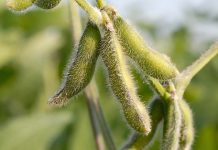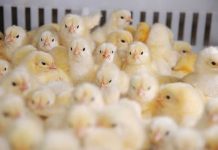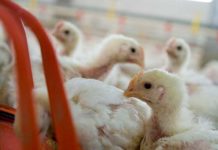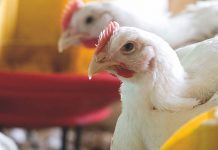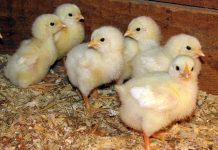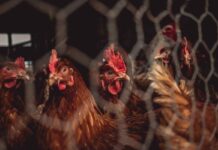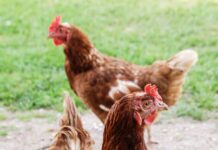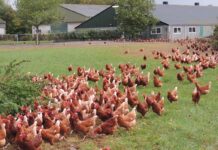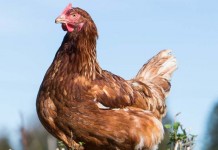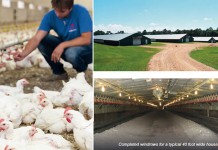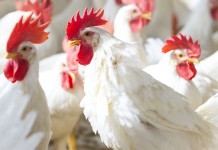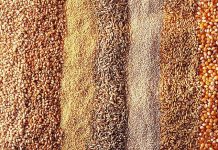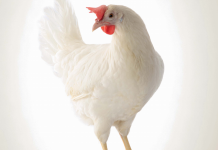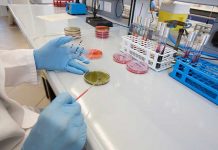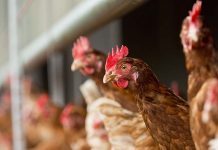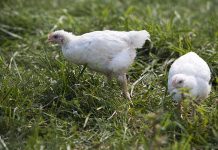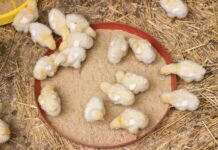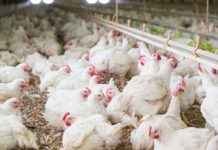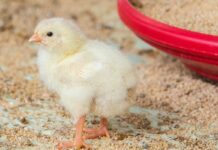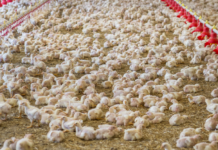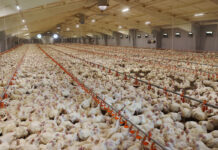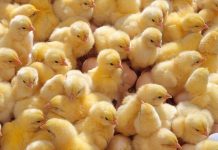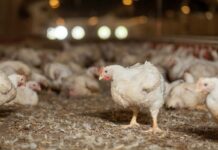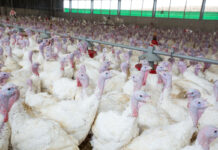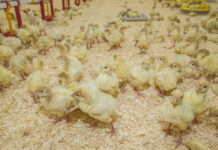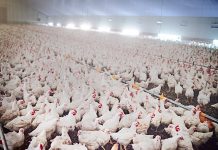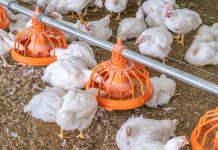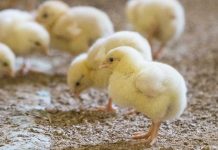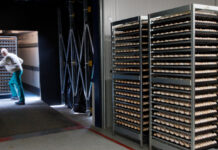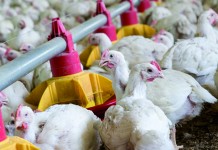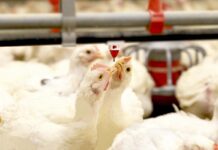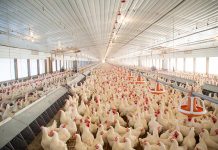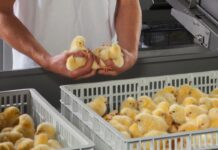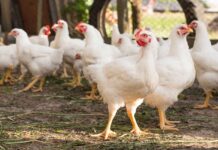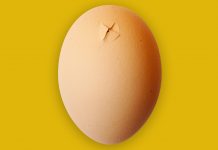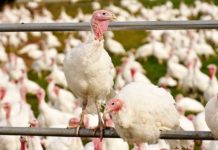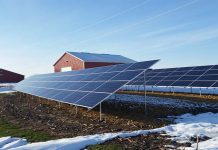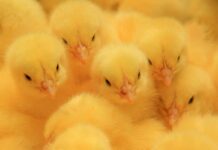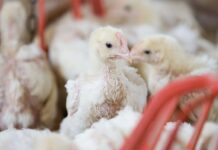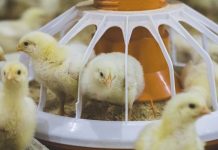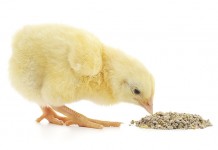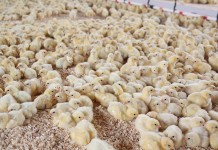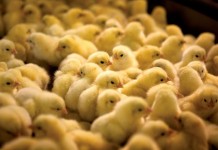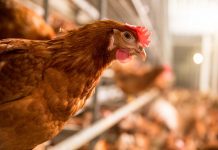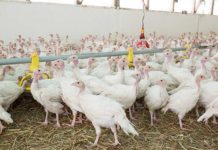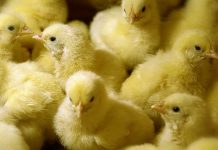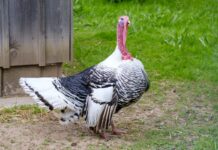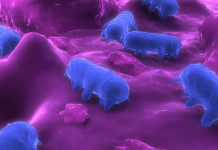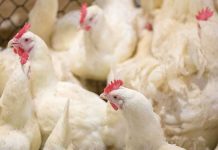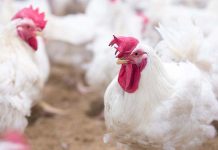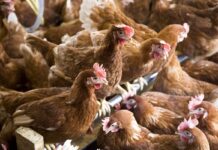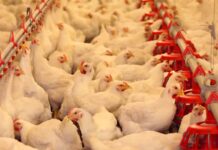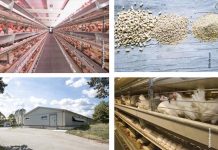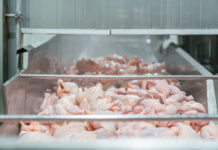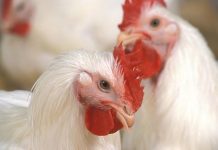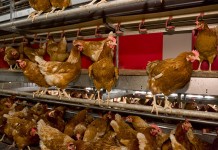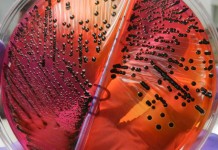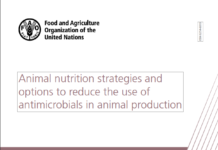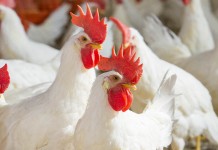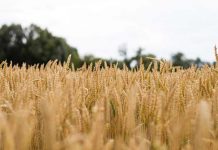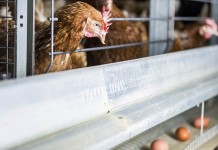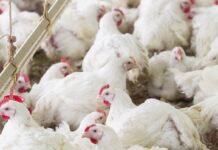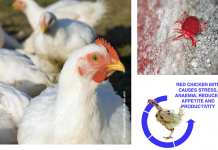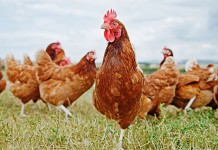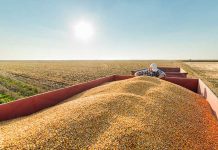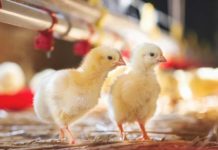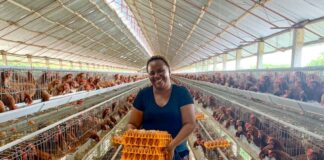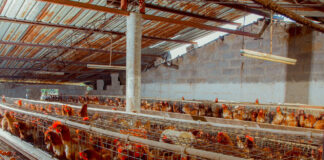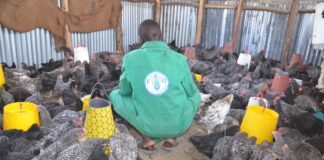NIRS study on nutritional profiles of 100 soybean meal samples from USA and Brazil
This paper compares the nutrient profile of soybean meal (SBM) samples from the USA and Brazil. Proximate analysis, total amino acids, standardized ileal digestibility...
The importance of right incubation temperatures
In this study researchers investigate the importante of right incubation temperature on broiler performance. Up to 30% of late growth meat chickens demonstrate reduced...
Research examines different dietary treatments for woody breast
USPOULTRY and the USPOULTRY Foundation announce the completion of a funded research project at Auburn University in Auburn, Alabama, in which researchers examined different...
Different incubation profiles for different breeds?
Breeding has powerful effects. Although all chicken breeds originate from the same wild ancestor, they differ dramatically in appearance, physiology, type and metabolic rate....
Reducing undigested protein available at the intestinal wall on broilers
An experiment was conducted to evaluate the effects of supplementing an inherently thermo stable protease in broilers fed diets based on single raw materials,...
Trouw Nutrition presents research during the Poultry Science Association Meeting
Synergistic use of different feed additives may support producers’ antibiotic reduction programmes.
Reducing antibiotic use in poultry production is an urgent objective shared by stakeholders...
Researchers investigate the cause and prevention of False Layer Syndrome
USPOULTRY and the USPOULTRY Foundation announced the completion of a funded research project at the University of Georgia in which researchers investigated the cause and prevention...
Researchers investigate how laying hens visually perceive the resources in cage-free housing
USPOULTRY and the USPOULTRY Foundation announced the completion of a funded research project at Purdue University in which researchers investigated how laying hens visually...
Consequences of outdoor ranging on external and inter-nal health parameters of hens from different...
Free-range layer pullets are typically reared indoors within Australia, but adult layers go outdoors which might cause poorer adaptation due to the mismatch between...
Effects of early enrichment on range use in free-range laying hens
Free-range laying hen production systems are perceived to be preferable for hens’ ethological needs. However, not all hens use the range daily with some...
Windrowing properly done
Windrowing litter between flocks has been used commercially since the 1980’s and continues to evolve to meet numerous production challenges. The goal is to...
Scientifically validated results to raise poultry production profitability
The Poultry Science Association 2017 Annual Meeting took place in Orlando, Florida on July 17-20. Being the most prestigious scientific event for poultry in...
Can xylanase inhibitors affect the efficacy of xylanases in poultry diets?
Xylanase inhibitors are reported to be widely present in cereals, and can influence the assay of supplemental xylanases in feeds.
In the present study, a...
Energy-efficiency in pre-conditioning inlet air for setters and hatchers
Hatcheries are found in a variety of climates, from the hot, humid tropics of South East Asia to hot, arid zones in the Middle...
H&N celebrated 70 years of excellent performances worldwide
To celebrate its 70-year success story and launch its new company logo, H&N gathered its distributors and customers in a two-day event in Bangkok. All these customers shared the same vision and experience: H&N layers are persistent and highly productive. Moreover they produce high quality eggs, meeting the demands of modern consumers.
Salmonella prevention strategies and influences of sampling method selection
Multiple factors can influence both Salmonella prevalence and diversity of Salmonella serogroups detected from both pre and post-harvest samples. Sampling methodologies vary widely when...
Vaccination of turkey breeders to control Salmonella
Salmonella continues to be a top food safety concern for the turkey industry, the USDA, and the consumer. Salmonella bacteria are the most frequently...
Management techniques for a hot climate
Hot conditions significantly affect the performance of layers, particularly in temperatures higher than 30°C. Getting good technical results requires some adjustments in the management...
Infectious Bursal Disease antibody levels and viral load in commercial broiler chickens
Infectious bursal disease (IBD) disease is caused by infectious bursal disease virus (IBDV) of the genus Avibirna-viridae and family Birna-viridae. IBDV is found worldwide...
Management of slow growing broilers for profit
Chicken is consumed in larger quantities than either beef or pork largely due to its relatively low fat and high protein content when compared...
Protein digestive dynamics influence growth performance of broiler chickens
Three apical diets were formulated to stimulate different protein digestion rates dependent on the major constituents: standard (soybean meal), rapid (whey protein) and very...
Detection and quantification of Gallibacterium anatis and Mycoplasma synoviae
Mycoplasma synoviae is one of the most common preconditions for secondary bacterial infections in poultry. It causes subclinical infections of the upper respiratory tract,...
Research examines novel next generation sequencing techniques
USPOULTRY and the USPOULTRY Foundation announce the completion of a funded research project at the University of Georgia in Athens, Georgia, in which researchers...
Using a multi-protease enzyme in poultry diets to improve broilers performance
The present study investigates the effect of protease on the productivity of broilers under reduced crude protein (CP) and amino acid (AA) diet conditions....
Biosecurity in poultry farming: an effective tool to fight infectious diseases
This is the first of a series of technical articles on biosecurity in poultry farming produced within the European project “NetPoulSafe - Networking European...
Healthy, uniform day-old chicks require hatchery accurate climate data
In a modern hatchery, climate data are collected from various sensors installed in incubators and hatchery rooms, and from handheld measuring instruments. The performance...
Biological control of Salmonella in the poultry industry: a European perspective
Salmonella remains one of the most important foodborne bacterial pathogens worldwide, and is frequently linked with the consumption of contaminated poultry meat and eggs....
Minimizing antibiotic use in broiler production
Many countries are being asked to reduce or eliminate antibiotic use in poultry, due to growing concerns about the use of antibiotics in food-producing...
Natural antioxidants and vitagene concept in poultry production – Second part
From vitamins to vitagene. In this second part the focus will be on the Vitagene concept, which refers to a group of genes involved...
Infectious bronchitis virus (IBV) vaccines produced in eggs have unpredictable mutations
Scientists at The Pirbright Institute have shown that infectious bronchitis virus (IBV) vaccines produced in eggs have unpredictable mutations which may be prone to...
Cost-effective biosecurity management practices
An effective flock health plan must integrate solid strategies for disease prevention, rapid diagnosis, and effective treatment to support poultry health. To attain this...
Researchers evaluate the effects of heat stress in poults
USPOULTRY and the USPOULTRY Foundation announced the completion of a funded research project at North Carolina State University in which researchers evaluated the effects...
Rise of Yeast Bioactives expands the toolbox for livestock operators
Canadian Bio-Systems receives Veterinary Health Products approval for Maxi-Nutrio® Liquid, a yeast bioactive technology.
An innovative new category of science-powered yeast technology, with dynamic potential to...
Supplementing Bacillus strains in chicken diets
The present study investigated the effects of dietary supplementation of several Bacillus strains on growth performance, intestinal inflammatory and anti-inflammatory cytokines, antioxidants and tight...
Better hatch and post-hatch performance
Hatchability, chick quality and post-hatch performance improve substantially when embryo-response parameters are actively controlled during incubation. The BioStreamerTM concept, developed by Petersime, continually monitors...
Why the difference?
Eggs from the same source delivered to different hatcheries will often give different results, even though their biological quality was identical and they were...
Research reveals method to improve Escherichia coli vaccines
A funded research project at the University of Georgia in Athens, Ga. was completed, in which researchers revealed a method to improve Escherichia coli...
Using more bioavailable sources of trace minerals pays off
A study of broiler breeder performance was conducted using three separate minerals programmes. The objective was to determine if productivity could be maintained at...
Best practice in management
How management best practice can help support profitability on broiler farms
In partnership with Cobb, this new series of articles will examine best practice in...
The challenge of feeding modern broiler breeders
Broiler breeders are expected to produce about 150 chicks in 40 weeks of production and even though it is commonly believed that selection for...
How to assess chick quality
The term "chick quality" is rather vague, as it can refer to various aspects – from directly visible physical traits to hidden ones, such...
Influence of age on the standardised ileal amino acid digestibility of maize and barley...
Grains are the major energy sources in broilers. However, they also supply about 40% of the total dietary protein and contribute significantly to the...
Air cell up when setting eggs!
It is important to pay attention to the orientation of the eggs when placing them on setter trays as this has quite an impact...
Innovation is the key for sustainability
Today it is important innovation, and it is the main way to sustainability. Here, we introduce René and Jolanda van Doren who have together...
Enhancing turkey welfare one step at a time
Researchers of Wageningen Livestock Research have been able to define when a turkey takes a step. This is an important milestone to automating gait...
Solar energy ensures cost-efficiency
Solar energy radiation means revenues – at least for farmers who have successfully harnessed renewable energies. However, with the latest amendment to the Renewable...
Marel Poultry, worry-free transfer performance up to 15,000 bph
For contemporary poultry processing plants, Marel Poultry has developed LineLink transfer systems, particularly suitable for capacities up to 15,000 bph. LineLink DE transfers products...
Boosting Chick Health from Day One: The Benefits of Spraying a Gelled Nutritional Complex...
In modern poultry production, the first hours of a chick’s life are critical. Yet, due to the natural spread of hatching over 24 to...
The effect of electrolyte supplementation on behaviour and performance of broilers
The present experiment was designed to investigate the effects of electrolyte supplementation in alleviating the harmful effects of high temperature for one day prior...
Performance, immunity and blood biochemical parameters of broiler chickens fed diets containing Kappaphycus alvarezii
Kappaphycus alvarezii (KPA) can be incorporated at 1.50% in diets for improved performance, immuno-responsiveness and blood biochemical parameters in broiler chickens.
Introduction
Kappaphycus alvarezii (KPA) is...
Development and evaluation of probiotics
As restrictions to antibiotic growth promoters (AGP) have become more prevalent, producers have turned to several technologies as probiotics - Direct Fed Microbials to...
How Xylanase can improve performance of a broiler diet
Whilst xylanase rich NSP-enzymes are used consistently in wheat based diets the question remains whether the positive response seen can be ascribed solely to...
Importance of hatch-time and access to feed on broiler muscle development
In commercial settings, hatching occurs over a 24-48 h window and chicks are held in the incubator until a majority have cleared the shell.
Earlier...
A practical approach to broiler breeder management in the absence of beak treatment –...
In the absence of beak treatment management strategies, which ensure appropriate bird development and growth and the provision of adequate environment and stimuli, which...
Reaching full potential with Innova IMPAQT
A real-time impact on performance, availability and quality
A modern poultry processing plant is a complex network of interconnecting processes operating at high speed. It...
UK Veterinary Vaccinology Network
Veterinary researchers from around the world came together at this year’s joint UK & International Veterinary Vaccinology Network Conference on the 9-10 January 2019...
Using sensor technology against feather pecking in laying hens
In collaboration between Animal Breeding and Genomics (WUR), Breed4Food and the COST Action GroupHouseNet, a review paper was written on how sensor technologies can...
Footpad dermatitis in market turkey hens. Bird density and bedding material relationships
Lameness
and poor footpad condition can be major issues for meat-type poultry resulting
in their decreased well-being and decreased productivity. A large body of
research exists for...
Considerations for a better quality of chicks
During the incubation period, embryonic growth and development are affected by different factors, as breeder age, the incubation temperature and the availability of egg...
Turkey dermatitis/cellulitis: where are we headed?
Clostridium septicum is a ubiquitous, spore-forming bacterium associated with spontaneous gas gangrene in both livestock and humans. The spores can persist in harsh environments,...
Reduction of Salmonella and Campylobacter on raw poultry
by improving the killing effect of surface decontaminating solutions
In the United States, poultry is the most highly consumed meat and its consumption has grown...
Low protein diets supplemented with glycine, glutamine or arginine for broilers
A previous study highlighted differences between a low protein (LP) diet and a higher concentration of amino acids (AA) for intestinal permeability and performance...
Antimicrobial drug resistance in poultry. What do we know about risk factors?
There is an increasing amount of published surveillance and diagnostic submissions data, providing information on prevalence and trends of antimicrobial drug use and antimicrobial...
Improved fly control on poultry facilities with microbial products
Parasitoid wasps and the entomopathogenic fungi Beauveria bassiana were both examined to see if augmentative releases of the pathogenic organisms can help lower house...
The importance of feeding time observation
Achieving proper bodyweight, flock uniformity, and sexual maturity at light stimulation are some of the biggest management challenges for broiler breeder farms.
Today’s breeder pullets...
Keel bone integrity in layers – Observations, nutritional remedies, and myth-busting
The issue of keel bone deformities and abnormalities is different depending on various housing systems for the birds. Keel fractures have received a lot...
Safeguarding processing yield across the primary process
The processing plant is the epicenter of a poultry processing company for being its only utility-generating area, as all the others are cost-generating centers,...
Research provides possibility to automate grading of woody breast fillets
In a recently completed research project, Dr. Casey Owens at the Department of Poultry Science, University of Arkansas, used automated vision grading to detect...
How to house happy birds by Vencomatic Group
Happy birds produce best. Aviary systems were invented to provide laying hens with maximum freedom, while using floor space efficiently. Aviaries consist of multiple...
Ability to detect Salmonella vs. Salmonella-Free in poultry processing
Poultry are sampled often for Salmonella during growout on the farm and throughout the processing plant. While on farm sampling is not currently a...
FAO published a report on animal nutrition strategies
FAO’s publication helps producers use nutrition strategies to reduce the use of antibiotics in their farms. Antimicrobial resistance (AMR) is an increasing threat to...
Black soldier fly larvae in meat chicken diets modifies the fatty acid profile in...
Black soldier fly (BSF) larvae are a promising alternative feed ingredient for monogastrics,includingpoultry.However,theimpactoffeedingBSFlarvaeinbroilerdietson the fatty acid profile of the breast chicken meat remains unknown.
This...
Practical views on global poultry nutrition – First part
The global supply of poultry products will need to double by 2050 if we are to meet the aspiration of all people to be...
Avian reovirus, molecular characterization
Avian reovirus (ARV) is the main cause of viral arthritis and tenosynovitis in chickens and turkeys, triggering economic losses in the poultry industry due...
Evaluating hen behaviour and physiological stressors during Ventilation Shut Down
USPOULTRY announces the completion of a funded research project at North Carolina State University in Raleigh, N.C. in which researchers provided insight on using...
Using accelerometers and artificial intelligence to predict presence of woody breast
The broiler industry has been challenged with a condition referred to as "woody breast" for the past 8-10 years, which can affect a significant...
The cost of mycoplasma infection in poultry
Sometimes some Mycoplasma infections cause disease in poultry and this has been extensively studied and worried about by veterinarians, poultry producers and veterinary authorities....
Optimal outdoor stocking density in free-range hens
Consumer concern for laying hen welfare is leading to an increase in alternative housing systems that provide valued resources designed to cater to hens’...
Corn milling efficiency and particle size effects on pullet growth performance
Corn is usually ground locally at the feed mill, while soybean meal is pre-processed and feed mills have little control over its particle size...
Prevention and control of biofilm in water line systems as part of biosecurity protocols
This paper does not address
the situations in which the microbiological quality of the water
has been compromised from the beginning; rather, this paper addresses how
drinking...


